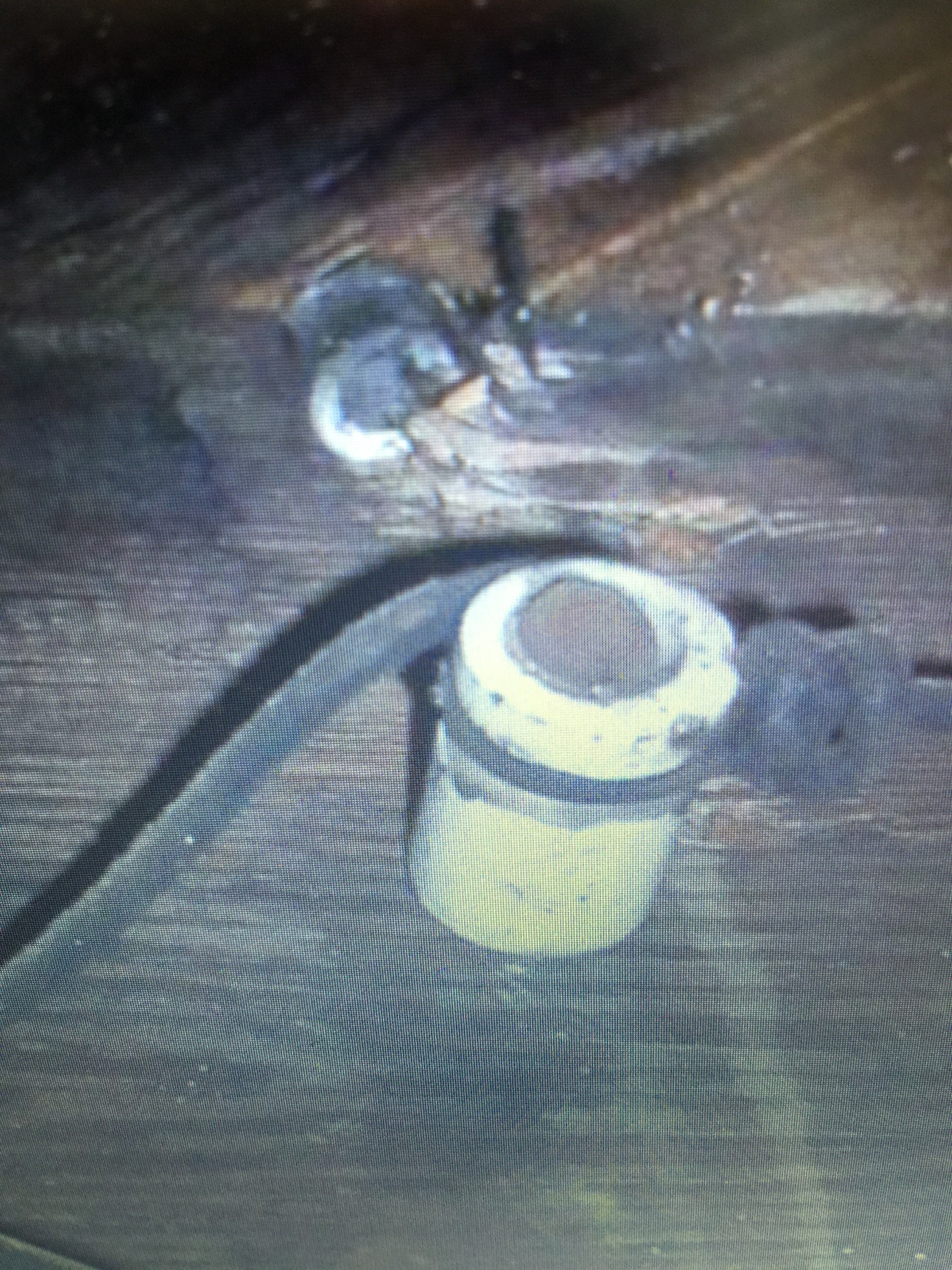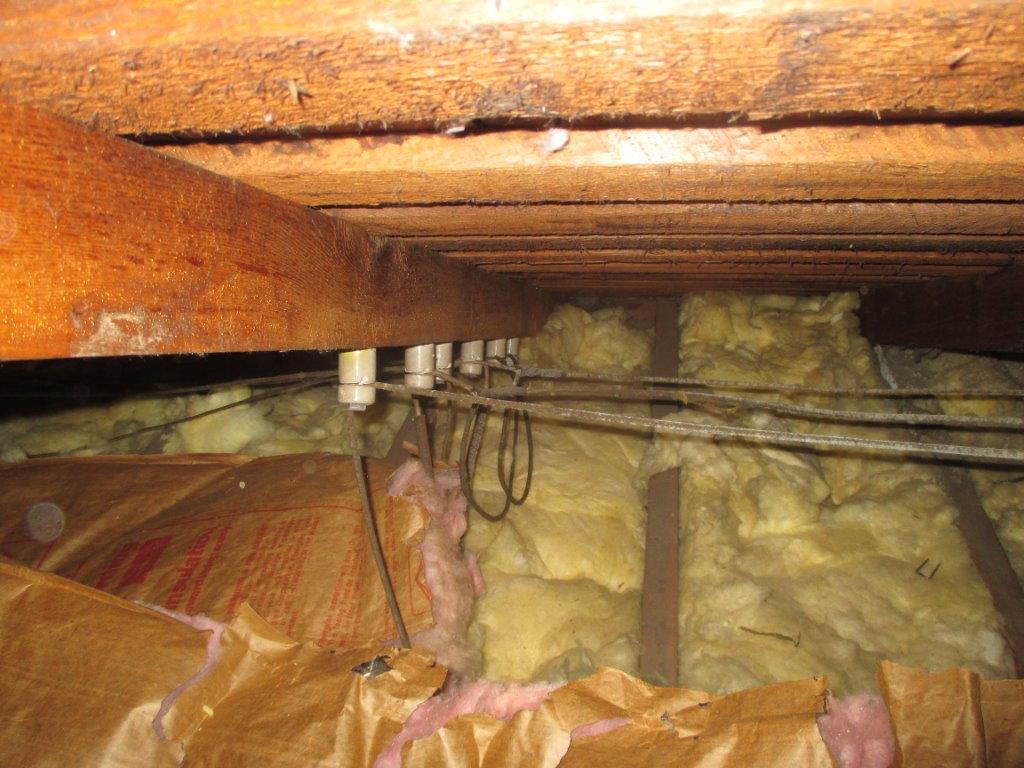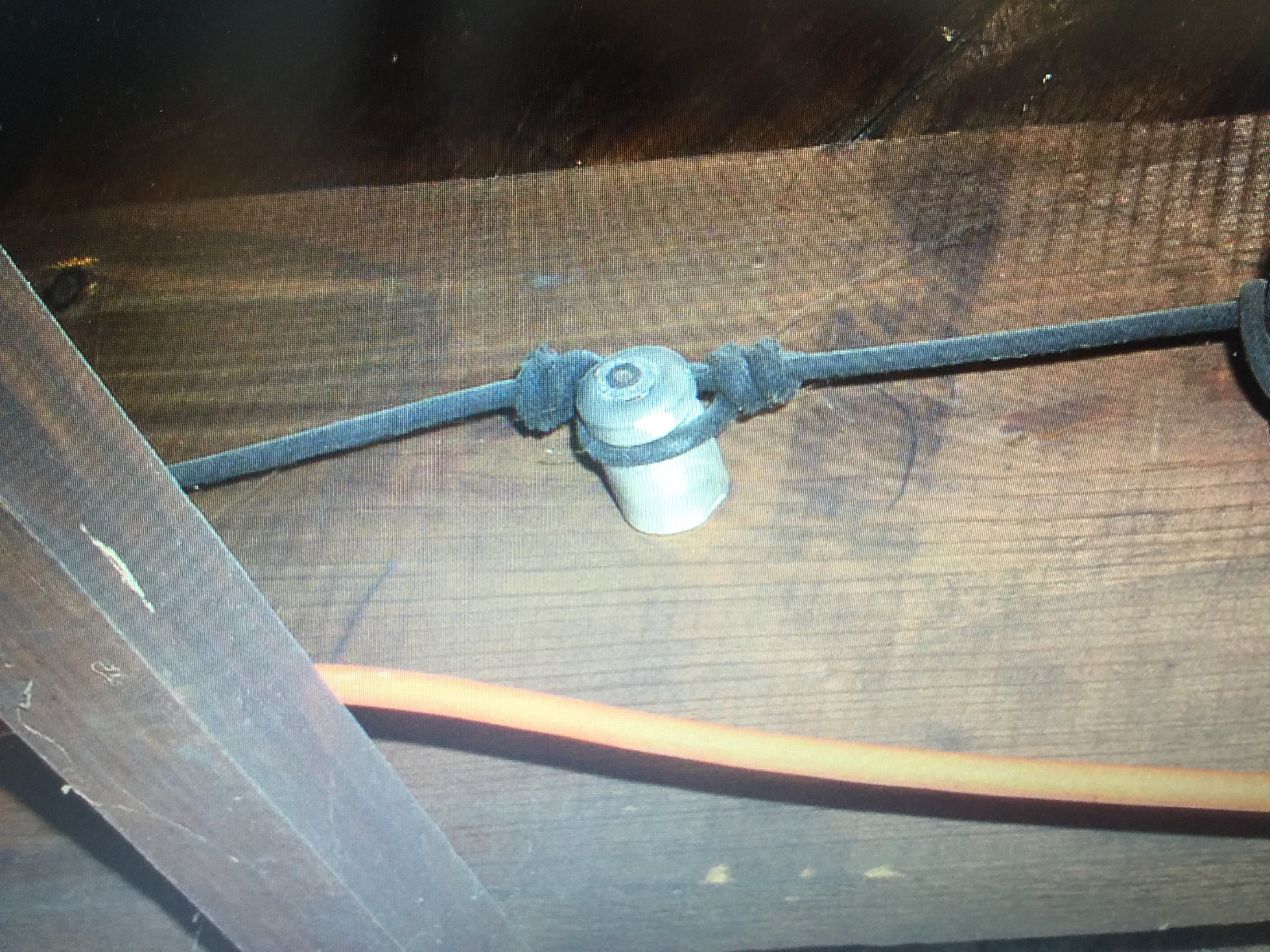KNOB & TUBE!!!! Wiring that is; copper conductors, insulated sleeves (if you grew up watching The Beverly Hillbillies, you would sing it like… 'Knob & Tube~ wiring that is; copper conductors, insulated sleeves—…… 'black gold–Texas 'T'). Common to North America between 1880 to the 1940's, Knob & Tube wiring was a standardized way of installing electrical wiring in buildings and homes. Single insulated copper conductors were run along ceiling cavities or within a wall. Holes were then drilled through joists and studs, insulated wires buffered by porcelain insulating tubes made their way through the drill holes and were supported along their length by nailed down porcelain knob insulators.
A flexible cloth, initially saturated in asphalt and eventually rubber, provided insulation for wires within a wall, crawl space or as  they enter a lamp or a switch plate. This flexible sheath cloth was called a 'loom.' The loom helped to provided protection and air circulation around the wires so that heat did not build up. When K & T is left in its original, undisturbed state, it can be reliable and safe. Sometimes, when these systems are modified or new loads in a home are placed on the electrical circuits, safety of the system can be compromised.
they enter a lamp or a switch plate. This flexible sheath cloth was called a 'loom.' The loom helped to provided protection and air circulation around the wires so that heat did not build up. When K & T is left in its original, undisturbed state, it can be reliable and safe. Sometimes, when these systems are modified or new loads in a home are placed on the electrical circuits, safety of the system can be compromised.
Eventually, due in part to the higher cost of installation, K & T was replaced with power cables which combined power conductors with a circuit in one run. Knob & Tube is no longer used in homes because it does not carry the same capacity for electricity that modern homes require. Additionally, you may be able to get financing for a home purchase with active Knob & Tube but many insurance companies may require removal prior to or 30 days after closing and/or insure the home at double the traditional costs.

 Facebook
Facebook
 X
X
 Pinterest
Pinterest
 Copy Link
Copy Link



